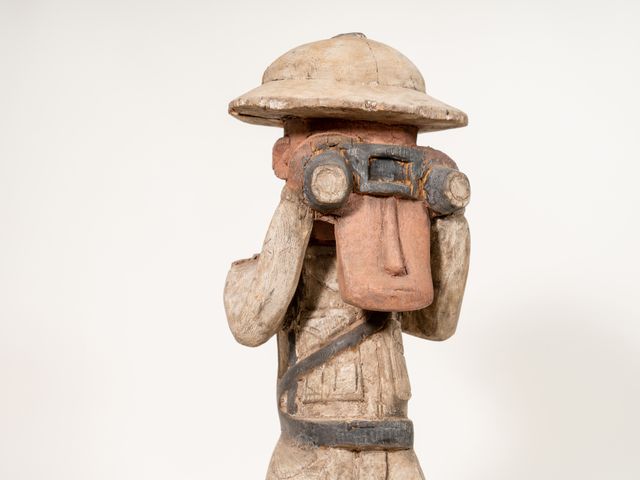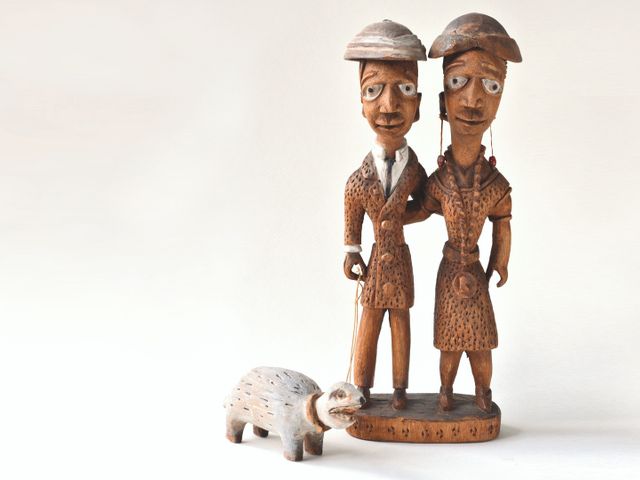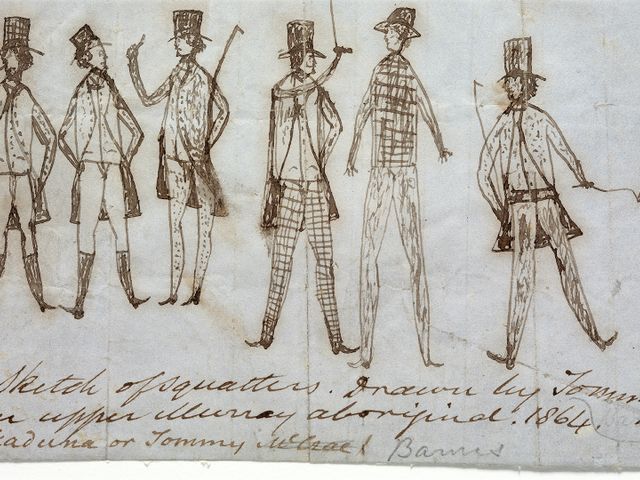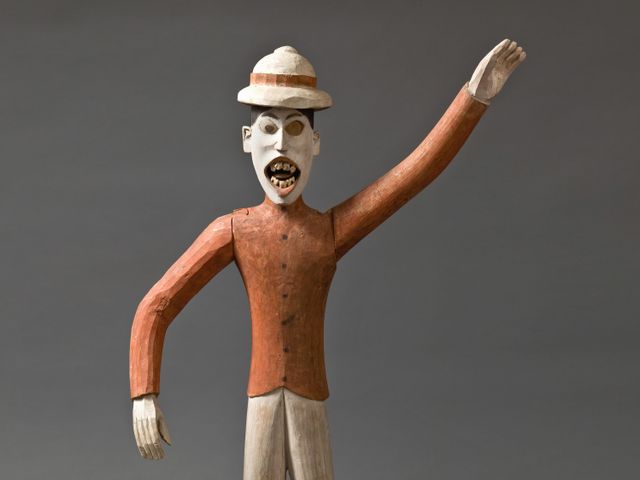Nov 1, 2019–Jan 6, 2020
Spectral-White
The Appearance of Colonial-Era Europeans
Exhibition, talks
Nov 1, 2019–Jan 6, 2020
Exhibition Hall 2
How were Europeans depicted in the art of the colonized? Starting from the collection of Cologne museum director and ethnologist Julius Lips (1895–1950), the exhibition addresses transcultural histories of the interconnectedness of colonial-era art.
“All that is needed to caricature an oppressor is to portray him exactly as he is.”
Julius Lips
In 1937, while in exile in the United States, the Cologne ethnologist Julius Lips published portrayals of colonial-era Europeans in his book The Savage Hits Back. With these pictures of soldiers, merchants, missionaries, kings and queens, he addressed the external perceptions of European culture with explicitly anti-racist intentions. The collection raises questions about violence and appropriation, cultural symbolization and mimesis, contact and resistance, and thus exposes the problems of the globally entangled history of modernity.
In the objects and photographs, Lips saw a form of realism superior to European art, but also anti-colonial satire and caricature. Some of the representations were specifically produced for white buyers. This makes Lips’ assertion of a resistive reversal of the hierarchies of the colonial gaze and its culturally critical implications appear questionable.
Spectral-White explores the historical philosophy-based theories of the boomerang-like return of colonial violence as an essential driving force for twentieth century European fascism. The exhibition questions racist projections, the desire and the blind spots that continue to make it difficult to escape the matrix of the white gaze.
Curated by Anna Brus in collaboration with Anselm Franke.
Part of Kanon-Fragen



